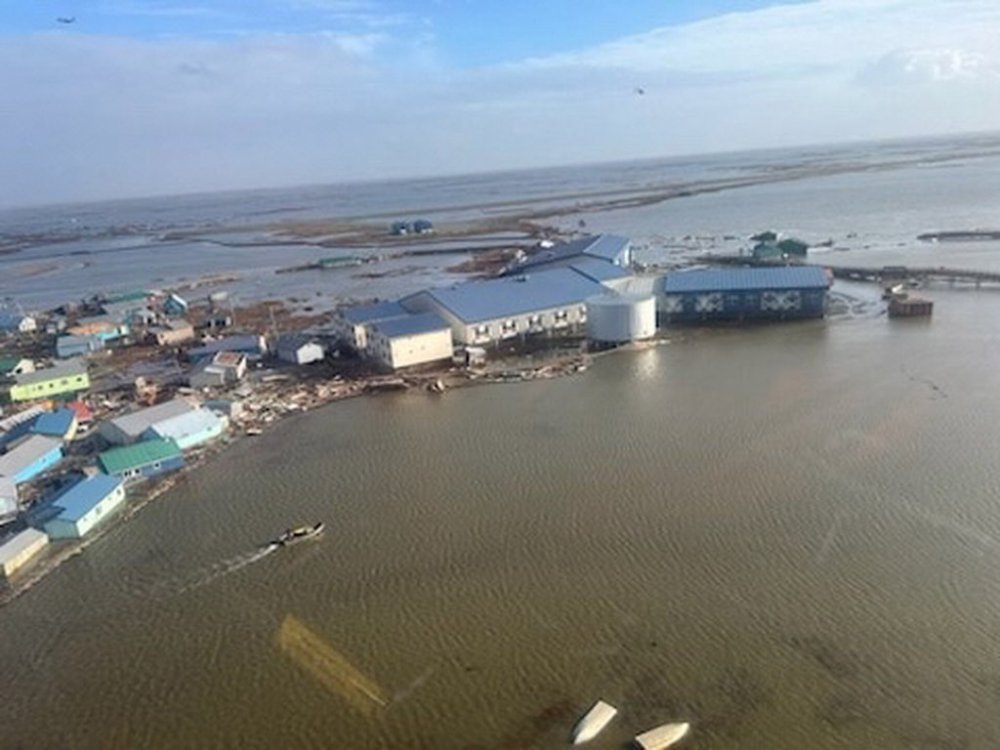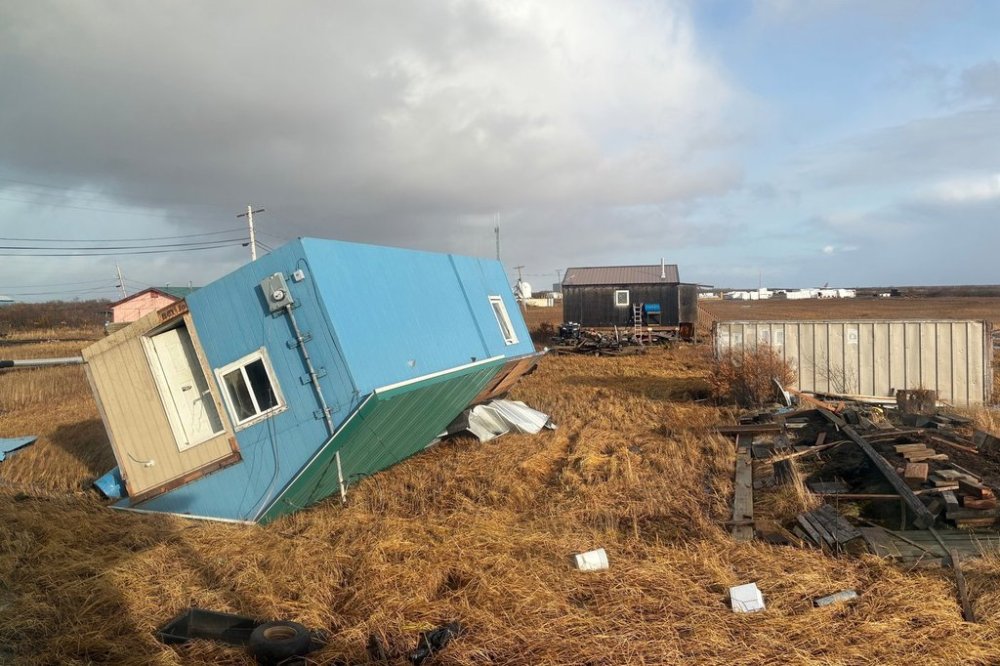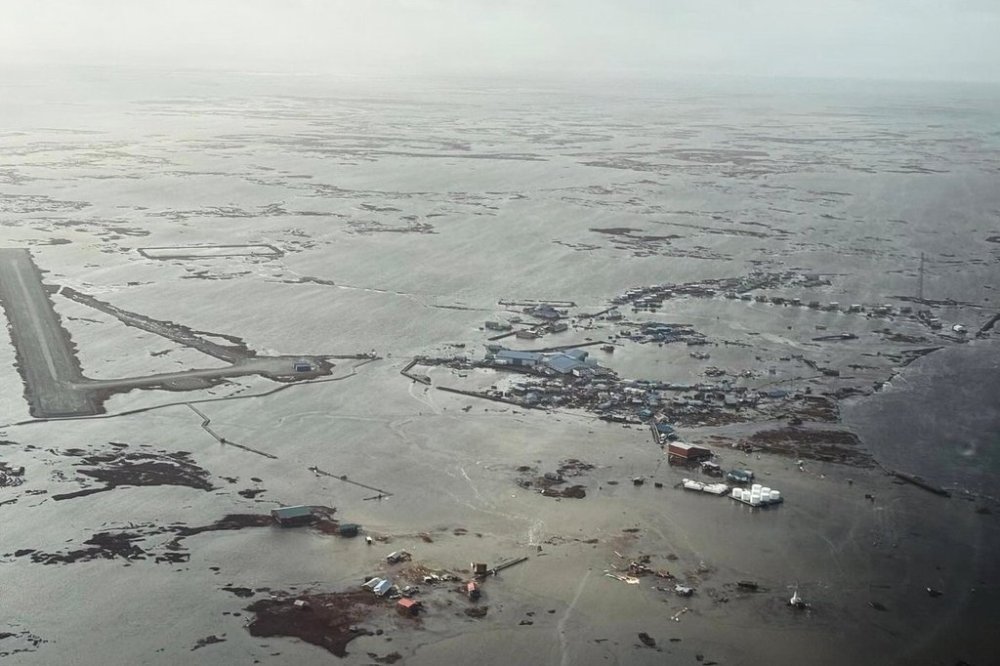Alaska airlifting hundreds from storm-devastated coastal villages
Advertisement
Read this article for free:
or
Already have an account? Log in here »
To continue reading, please subscribe:
Monthly Digital Subscription
$0 for the first 4 weeks*
- Enjoy unlimited reading on winnipegfreepress.com
- Read the E-Edition, our digital replica newspaper
- Access News Break, our award-winning app
- Play interactive puzzles
*No charge for 4 weeks then price increases to the regular rate of $19.00 plus GST every four weeks. Offer available to new and qualified returning subscribers only. Cancel any time.
Monthly Digital Subscription
$4.75/week*
- Enjoy unlimited reading on winnipegfreepress.com
- Read the E-Edition, our digital replica newspaper
- Access News Break, our award-winning app
- Play interactive puzzles
*Billed as $19 plus GST every four weeks. Cancel any time.
To continue reading, please subscribe:
Add Free Press access to your Brandon Sun subscription for only an additional
$1 for the first 4 weeks*
*Your next subscription payment will increase by $1.00 and you will be charged $16.99 plus GST for four weeks. After four weeks, your payment will increase to $23.99 plus GST every four weeks.
Read unlimited articles for free today:
or
Already have an account? Log in here »
JUNEAU, Alaska (AP) — One of the most significant airlifts in Alaska history was underway Wednesday to move hundreds of people from coastal villages ravaged by high surf and strong winds from the remnants of Typhoon Halong last weekend, officials said.
The storm brought record water levels to two low-lying communities and washed away homes — some with people inside. At least one person was killed and two are missing. Makeshift shelters were quickly established and swelled to about 1,500 people, an extraordinary number in a sparsely populated region where communities are reachable by air or water.
The remoteness and the scale of the destruction created challenges for getting resources in place. Damage assessments have been trickling in as responders have shifted from initial search-and-rescue operations to trying to stabilize or restore basic services.

The communities of Kipnuk and Kwigillingok near the Bering Sea saw water levels more than 6 feet (1.8 meters) above the highest normal tide line. Leaders asked the state to evacuate the more than 1,000 residents in those villages, said Jeremy Zidek, a spokesperson with the state emergency management office.
Some homes cannot be reoccupied, even with emergency repairs, and others may not be livable by winter, said emergency management officials. Forecasters say rain and snow is possible in the region this weekend, with average temperatures soon below freezing.
Mark Roberts, the incident commander with the state emergency management agency, said the immediate focus was on “making sure people are safe, warm and cared for while we work with our partners to restore essential services.”
Meantime, restrooms were again working at the school in Kwigillingok, where about 350 people had sheltered overnight Tuesday, according to a state emergency management statement. “Damage to many homes is severe, and the community leadership is instructing residents not to reenter homes due to safety concerns,” it said.
About 300 evacuees were being brought to Anchorage on Wednesday, about 500 miles (805 kilometers) east of the battered coastline villages, according to the state Department of Military and Veterans Affairs. They were going to the Alaska Airlines Center, a sports and events complex with capacity for about 400, Zidek said.
Shelter space closer to home — in the southwest Alaska regional hub of Bethel — had been reaching capacity, officials said.
Zidek did not know how long the evacuation process would take and said authorities were looking for additional sheltering locations. The aim is to get people from congregate shelters into hotel rooms or dormitories, he said.

The crisis unfolding in southwest Alaska has drawn attention to Trump administration cuts to grants aimed at helping small, mostly Indigenous villages prepare for storms or mitigate disaster risks.
For example, a $20 million U.S. Environmental Protection Agency grant to Kipnuk, which was inundated by floodwaters, was terminated by the Trump administration, a move challenged by environmental groups. The grant was intended to protect to protect the boardwalk residents use to get around the community as well as 1,400 feet (430 meters) of river from erosion, according to a federal website that tracks government spending.
There was limited work on the project before the grant was ended. The village had purchased a bulldozer for shipment and briefly hired a bookkeeper, according to Public Rights Project, which represents Kipnuk.
The group said no single project was likely to prevent the recent flood. But work to remove abandoned fuel tanks and other material to prevent it from falling into the river might have been feasible during the 2025 construction season.
“What’s happening in Kipnuk shows the real cost of pulling back support that was already promised to front line communities,” said Jill Habig, CEO of Public Rights Project. “These grants were designed to help local governments prepare for and adapt to the growing effects of climate change. When that commitment is broken, it puts people’s safety, homes and futures at risk.”
___

This story has been corrected to remove a sentence that was not included in an emergency department statement.
__
Bedayn reported from Denver. Associated Press writer Michael Phillis in Washington contributed.

